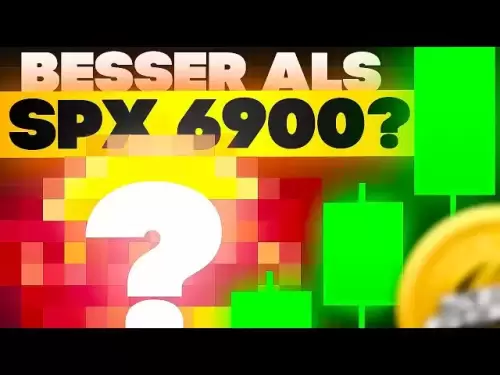-
 Bitcoin
Bitcoin $111,275.0204
2.42% -
 Ethereum
Ethereum $2,751.2446
5.72% -
 Tether USDt
Tether USDt $1.0002
0.00% -
 XRP
XRP $2.4052
4.43% -
 BNB
BNB $667.5293
1.45% -
 Solana
Solana $157.4885
4.86% -
 USDC
USDC $1.0000
0.00% -
 TRON
TRON $0.2900
0.91% -
 Dogecoin
Dogecoin $0.1825
7.23% -
 Cardano
Cardano $0.6232
6.29% -
 Hyperliquid
Hyperliquid $41.0012
5.99% -
 Sui
Sui $3.0502
5.72% -
 Bitcoin Cash
Bitcoin Cash $508.9936
2.24% -
 Chainlink
Chainlink $14.3252
3.65% -
 Stellar
Stellar $0.2863
11.81% -
 UNUS SED LEO
UNUS SED LEO $9.0359
-0.43% -
 Avalanche
Avalanche $19.4590
6.24% -
 Shiba Inu
Shiba Inu $0.0...01247
5.71% -
 Hedera
Hedera $0.1706
6.25% -
 Toncoin
Toncoin $2.8348
1.51% -
 Litecoin
Litecoin $91.0891
4.50% -
 Monero
Monero $325.8423
3.38% -
 Polkadot
Polkadot $3.6552
5.86% -
 Dai
Dai $1.0000
0.00% -
 Ethena USDe
Ethena USDe $1.0011
0.05% -
 Uniswap
Uniswap $8.3696
9.75% -
 Bitget Token
Bitget Token $4.3920
1.50% -
 Pepe
Pepe $0.0...01125
11.06% -
 Aave
Aave $302.0589
4.27% -
 Pi
Pi $0.4722
3.22%
How to import external wallets into Coinbase? Private key and mnemonic operation guide
Jul 09, 2025 at 10:28 pm
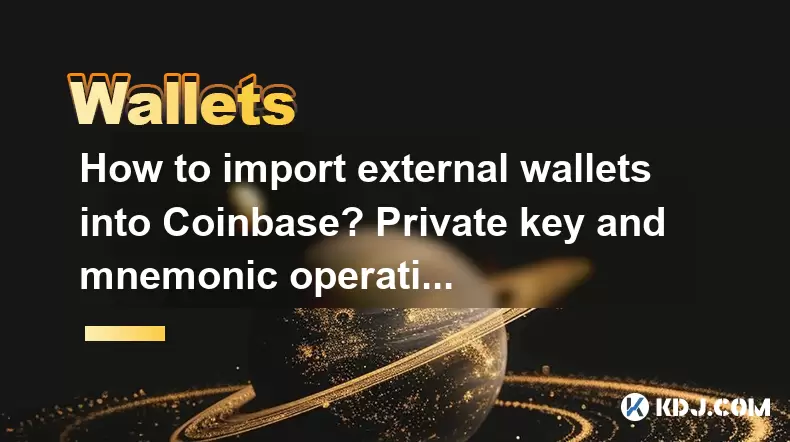
Understanding Wallet Import Options on Coinbase
When users want to import external wallets into Coinbase, it's essential to understand the available options and limitations. Coinbase, as a custodial wallet service, does not natively support importing private keys or mnemonic phrases directly into its mobile or web applications. However, Coinbase Wallet, which is a non-custodial solution separate from the main Coinbase app, allows for such operations.
The key distinction lies between the main Coinbase platform and Coinbase Wallet. The former manages private keys on behalf of users, while the latter gives full control to the user. Therefore, if you're looking to import an external wallet using a private key or mnemonic phrase, you must use the Coinbase Wallet application or browser extension.
Preparing Your External Wallet for Import
Before attempting to import an external wallet, ensure that:
- You have access to your private key or 12-word mnemonic phrase
- You are using the Coinbase Wallet app (not the standard Coinbase app)
- You are in a secure environment, away from prying eyes
It’s crucial to never expose your private keys or recovery phrases publicly. Doing so can lead to irreversible loss of funds. If you're importing via a private key, make sure it corresponds to the correct blockchain address and that the associated cryptocurrency is supported by Coinbase Wallet.
If using a mnemonic phrase, verify that it follows the BIP39 standard, which most modern wallets adhere to. This ensures compatibility with other wallet services like Coinbase Wallet.
Importing Using a Private Key
To import an external wallet using a private key into Coinbase Wallet, follow these steps:
- Open the Coinbase Wallet app
- Tap on Create a new wallet
- Select I already have a wallet
- Choose Private Key
- Carefully enter your private key into the field provided
- Set up a strong password for the wallet
- Confirm your backup phrase when prompted
- Complete the setup process
During this process, Coinbase Wallet will generate a new mnemonic phrase for backup purposes. Even though you imported via a private key, this new recovery phrase should be securely stored as it governs access to the newly created wallet.
Importing Using a Mnemonic Phrase
For those who prefer to import using a recovery phrase, the steps within Coinbase Wallet are as follows:
- Launch the Coinbase Wallet app
- Tap on Create a new wallet
- Select I already have a wallet
- Choose Recovery Phrase
- Enter your 12-word mnemonic phrase in the correct order
- Create a strong password for local encryption
- Confirm the words in the correct sequence
- Finalize the import process
Once completed, Coinbase Wallet will treat the imported account as one of its own. Any assets associated with that mnemonic phrase should now appear in the wallet, assuming they are compatible with the network settings used during import.
Verifying Imported Funds and Network Compatibility
After successfully importing a wallet, it's important to check whether the expected balances appear. In some cases, especially with ERC-20 tokens or other blockchain-specific assets, users may need to manually add token addresses or switch networks within the wallet.
To verify:
- Navigate to the Assets tab
- Ensure the correct blockchain network is selected (e.g., Ethereum, Polygon, etc.)
- If necessary, use the Add Token feature to input contract addresses
- Check for any pending transactions or incorrect network configurations
If funds still do not appear, double-check that the imported wallet was indeed associated with the correct public address and that the network settings match the origin wallet.
Troubleshooting Common Import Issues
Users may encounter issues when trying to import wallets into Coinbase Wallet. Some common problems include:
- Incorrect mnemonic phrase entry: Always double-check word spelling and order
- Wrong network selection: Assets may exist on a different blockchain than what’s currently selected
- Unsupported tokens: Not all tokens are automatically recognized; manual addition might be required
- Mismatched private key format: Some wallets use different formats (e.g., WIF vs. hex), which may cause import errors
If you face persistent issues, consider reaching out to Coinbase Wallet support or consulting their official documentation for troubleshooting guidance specific to your case.
Frequently Asked Questions
Q: Can I import multiple wallets into Coinbase Wallet?
Yes, Coinbase Wallet allows you to import and manage multiple wallets. Each wallet will have its own unique recovery phrase and settings.
Q: What happens to my original wallet after importing into Coinbase Wallet?
Importing does not affect your original wallet. Both wallets will control the same blockchain address, meaning either can be used to send or receive funds.
Q: Is it safe to import a wallet into Coinbase Wallet?
As long as you’re using the official Coinbase Wallet app and ensuring no third parties observe your recovery phrase or private key, the process is generally safe. Always avoid phishing sites or fake apps.
Q: Do I need internet access to import a wallet?
No, the import process does not require real-time internet access. However, you’ll need connectivity later to sync balances and interact with the blockchain.
Clause de non-responsabilité:info@kdj.com
Les informations fournies ne constituent pas des conseils commerciaux. kdj.com n’assume aucune responsabilité pour les investissements effectués sur la base des informations fournies dans cet article. Les crypto-monnaies sont très volatiles et il est fortement recommandé d’investir avec prudence après une recherche approfondie!
Si vous pensez que le contenu utilisé sur ce site Web porte atteinte à vos droits d’auteur, veuillez nous contacter immédiatement (info@kdj.com) et nous le supprimerons dans les plus brefs délais.
-
 KEEP Échangez maintenant
KEEP Échangez maintenant$0.1142
52.83%
-
 ZBCN Échangez maintenant
ZBCN Échangez maintenant$0.0037
42.87%
-
 M Échangez maintenant
M Échangez maintenant$0.2817
36.89%
-
 MAGIC Échangez maintenant
MAGIC Échangez maintenant$0.1983
25.63%
-
 BANANAS31 Échangez maintenant
BANANAS31 Échangez maintenant$0.0232
22.27%
-
 USELESS Échangez maintenant
USELESS Échangez maintenant$0.2837
17.26%
- Nexbridge, Nexplace et l'écosystème Bitcoin: construire une nouvelle frontière financière
- 2025-07-09 23:10:13
- MEXC Launchpad & Pump Token: Saisissez une remise de 40%?
- 2025-07-09 22:50:12
- Révolution du système commercial: comment XDC et la fin des télécopies sont de remodeler les finances
- 2025-07-09 23:10:13
- Ripple, Clarity Act et The XRP Case: A New York Minute on Crypto Regulation
- 2025-07-09 23:50:12
- Pas de monnaie Rs 50? Delhi HC entend pourquoi l'Inde préfère les billets
- 2025-07-09 23:15:11
- Pas de monnaie Rs 50? Delhi HC entend pourquoi les billets de banque règnent suprême
- 2025-07-09 23:50:12
Connaissances connexes

Comment trouver une adresse de réception spécifique sur mon Trezor
Jul 09,2025 at 10:36pm
Comprendre l'objectif d'une adresse de réception Une adresse de réception est un identifiant unique utilisé dans les réseaux de blockchain pou...

Comment connecter Trezor à Rabby Wallet
Jul 09,2025 at 05:49am
Qu'est-ce que Trezor et Rabby Wallet? Trezor est un portefeuille matériel développé par Satoshilabs qui permet aux utilisateurs de stocker en tout...
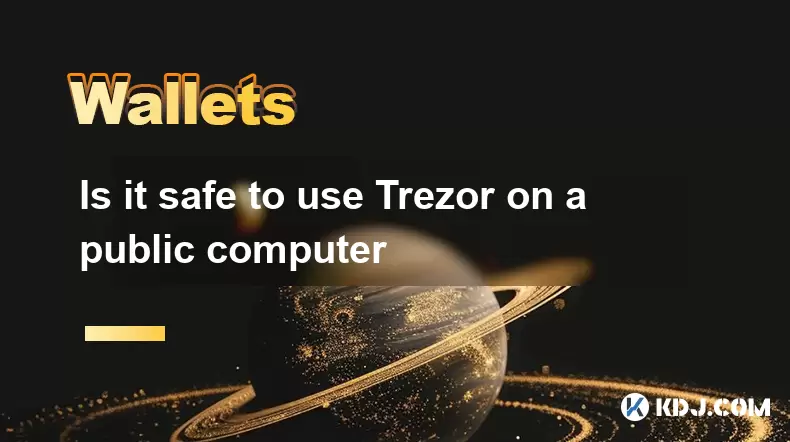
Est-il sûr d'utiliser Trezor sur un ordinateur public
Jul 09,2025 at 08:56pm
Comprendre les risques d'utiliser Trezor sur un ordinateur public L'utilisation d'un portefeuille matériel Trezor est généralement considé...

Que se passe-t-il si j'oublie ma phrase secrète Trezor
Jul 09,2025 at 03:15am
Comprendre le rôle d'une phrase secrète Trezor Si vous utilisez un portefeuille matériel Trezor , vous pouvez avoir configuré une phrase secrète c...
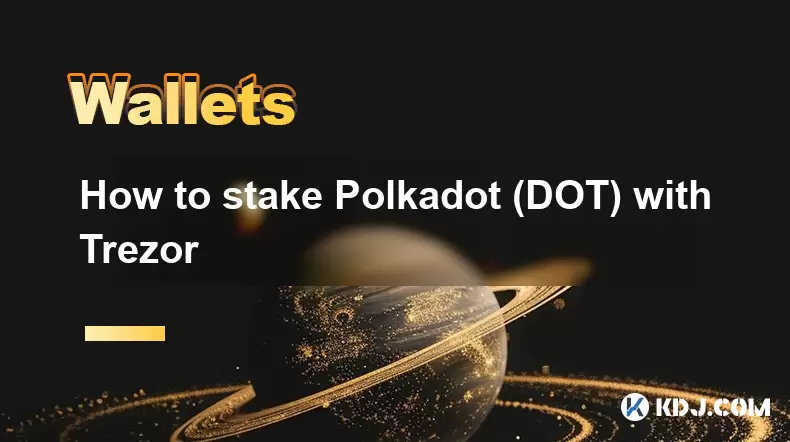
Comment jouer Polkadot (DOT) avec Trezor
Jul 09,2025 at 09:42pm
Comprendre le jalonnement de Polkadot (DOT) La mise en œuvre de Polkadot (DOT) permet aux utilisateurs de participer à la validation du réseau et de g...
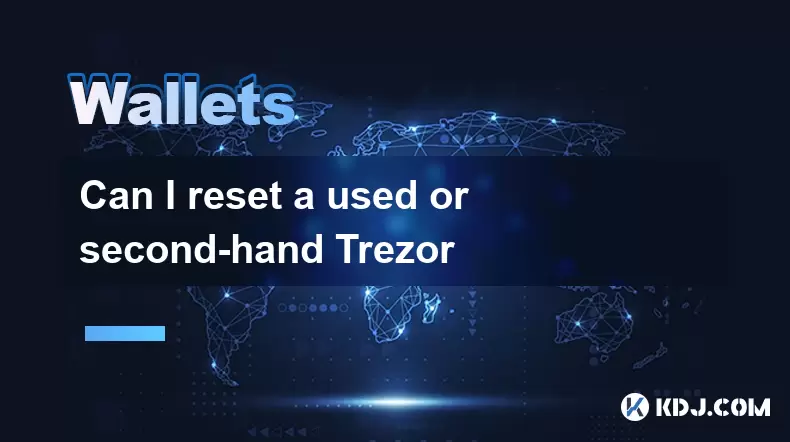
Puis-je réinitialiser un Trezor d'occasion ou d'occasion
Jul 09,2025 at 11:49am
Comprendre le processus de réinitialisation pour un Trezor d'occasion ou d'occasion Si vous avez acquis un portefeuille Trezor d'occasion ...

Comment trouver une adresse de réception spécifique sur mon Trezor
Jul 09,2025 at 10:36pm
Comprendre l'objectif d'une adresse de réception Une adresse de réception est un identifiant unique utilisé dans les réseaux de blockchain pou...

Comment connecter Trezor à Rabby Wallet
Jul 09,2025 at 05:49am
Qu'est-ce que Trezor et Rabby Wallet? Trezor est un portefeuille matériel développé par Satoshilabs qui permet aux utilisateurs de stocker en tout...

Est-il sûr d'utiliser Trezor sur un ordinateur public
Jul 09,2025 at 08:56pm
Comprendre les risques d'utiliser Trezor sur un ordinateur public L'utilisation d'un portefeuille matériel Trezor est généralement considé...

Que se passe-t-il si j'oublie ma phrase secrète Trezor
Jul 09,2025 at 03:15am
Comprendre le rôle d'une phrase secrète Trezor Si vous utilisez un portefeuille matériel Trezor , vous pouvez avoir configuré une phrase secrète c...

Comment jouer Polkadot (DOT) avec Trezor
Jul 09,2025 at 09:42pm
Comprendre le jalonnement de Polkadot (DOT) La mise en œuvre de Polkadot (DOT) permet aux utilisateurs de participer à la validation du réseau et de g...

Puis-je réinitialiser un Trezor d'occasion ou d'occasion
Jul 09,2025 at 11:49am
Comprendre le processus de réinitialisation pour un Trezor d'occasion ou d'occasion Si vous avez acquis un portefeuille Trezor d'occasion ...
Voir tous les articles























